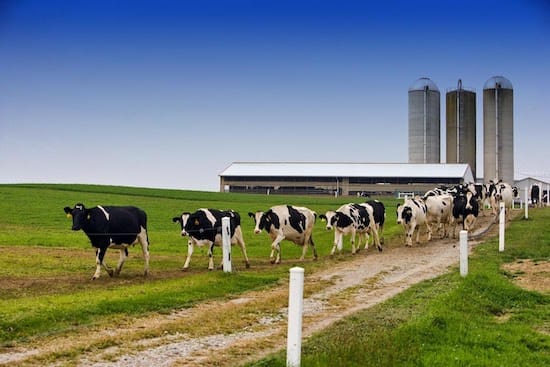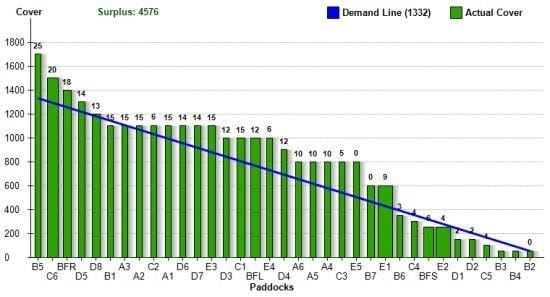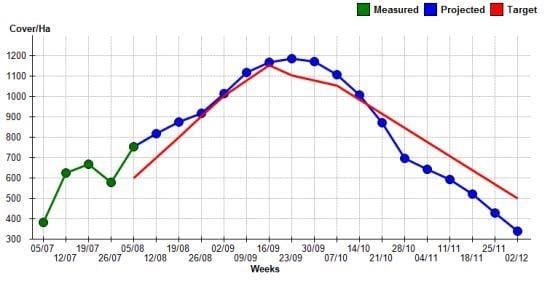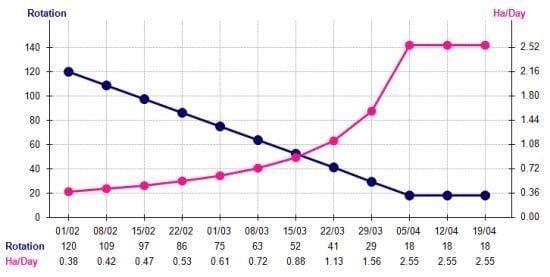You might have heard about AgriNet. Maybe, you are even considering investing in it. Read on, as we do an in-depth exploration of what AgriNet Grass has to offer. If you're interested, check out some other apps here.
AgriNet started in 1994; as Irish Farm Computers, today, it develops software to help farmer’s record data and use it to manage their farm business. They currently offer herd management, grassland budgeting, and financial software. With a couple of strategic partnerships, they have access to thousands of farmers, especially in Ireland. This makes them a prominent player in this space.
A few years ago, Progressive Genetics invested in them. More recently, in 2016, they merged with Teagasc, Ireland's National Agriculture and Food Development Authority. AgriNet is quite popular in Ireland because it helps farmers meet the country’s dairy and beef compliance requirements. But what if you are a livestock farmer from another country? Should you consider using AgriNet?
How Can Grassland (Pasture) Budgeting Software Help You
As a progressive farmer, one of your primary goals would be to measure and manage your pasture to earn better profits. The first step in doing this is to use some software. Why? Because it helps you enter, store, and analyze all your data in one place, digitally. Because it creates a systematic procedure for you to evaluate your grazing decisions and make the best use of your paddocks.

In addition to this, it can also help you get better advice from farm consultants or advisors. It might also help you manage multiple farms across multiple locations. No matter what your situation, the benefits of measuring and managing your pasture outweigh the reasons not to do it, several times over.
How Much Will Agrinet Cost You
AgriNet Grass has a flat fee of € 100 per year. This includes their online software, access to the software via your smartphone, their discussion groups as well as any technical support or training you might need.
What Can Agrinet Help You Do
The software helps you divide your farm into a series of paddocks and helps you enter pasture growth data for each paddock, across seasons and time. For best results, farmers are expected to measure their paddocks once a week. Also, for rotational grazing plans to make sense, farmers are expected to divide their paddocks into approximately equal pieces of land because you cannot get consistent results when one paddock is 4 to 5 times bigger than the other one.
However, you still have to use tools such as the RPM, C-Dax, or electronic motes to get the pasture growth data in the first place. This is a massive disadvantage, in our opinion, as it can cost you a lot. We have already written in detail about why using tools like RPMs, or C-Dax pasture meters might not be your best bet. In the long run, most likely than not, it will cost you much more than expected.
Once you enter paddock data, the software gives you an easy to understand visual, that maps pasture cover in terms of Kg DM/ ha against your paddocks. It also automatically flags paddocks that have pastures below grazing levels, which are less than 2000 Kg DM/ ha. However, other free generic tools such as excel can also help you do all these steps.

Where the software stands out is, it can help you estimate how much dry matter your livestock needs. It can also help you plan how much pasture can be grazed, how much can be stored as silage, and how much fodder needs to be bought. Again you have to provide all this raw data. The software will package this data in an easy to understand visual format. Generic tools such as excel cannot do this easily, at least not without hours of customization.

The software also can help you plan rotational grazing schedules. Again, you have to provide the underlying assumptions for the model, such as start date, end date, and rotational length. No doubt, these are all useful features for any farmer. According to us, the software does a good job technically. However, it does not do a good job of helping farmers get accurate data and assumptions. It also does not make the farmers' lives one bit easier when it comes to assisting them to collect data.

In our opinion, this is a big problem because we already know that tools such as RPM have huge error margins. And other tools such as C-Dax meters and electronic motes cost a lot in terms of upfront investments, associated labor, or ongoing maintenances. Also, the software depends entirely on the farmer for all the data. Among other things, the farmer is expected to input soil temperatures, weekly rainfall, livestock fodder requirements, and grazing start-end dates. Realistically, no farmer can enter accurate data for all these points every month, let alone every week. Meaning all models and suggestions are going to be based on inaccurate (or in some cases faulty) data and assumptions.
Is Agrinet Worth It?
Any effort towards measuring and managing your pasture helps a lot. So probably, a better question to ask is – What can AgriNet help me do that I can’t otherwise do? The answer is probably not a lot more. Especially if you are either an advanced Excel user or can hire one for a few days.
Don’t get us wrong, AgriNet Grass helps you form habits to log in pasture data, analyze it, and visualize the analysis in graphs. It does a pretty good job at this. However, as discussed, its most significant shortfall is that it a) does not make it easier for the farmer to collect accurate data, and b) that it builds models and makes assumptions based on inaccurate data.
You are expected to adjust for errors. For example, if you can't explain why your pasture cover has dropped by 100 Kg DM/ ha from last week, especially when no grazing has happened, you are expected to enter the previous week's values. In reality, this drop can be due to factors such as weather, inaccurate measurements, etc. But you are expected to adjust data up to ± 300 Kg DM/ ha.
Imagine planning for your fodder requirements, estimating how much nutrition our livestock gets, deciding rotational lengths based on these inaccuracies. They add up and give you inaccurate results.
Some might argue that the actual value is in the planning and creating systems – not the suggestion models. Farmers are better equipped to make these decisions based on experience. We agree, partly. But if we are going to be investing time, effort, and money in doing this anyway – why not do it accurately?
Are There Better Alternatives?
Today, there are other applications such as Pasture.io that use artificial intelligence and high-resolution satellite imagery to help farmers automatically measure pasture growth. It factors in local weather and farm data. The weather data helps factor in seasonal weather changes, and the farm data helps factor other important local variables such as when your cows last grazed a particular paddock or when a paddock was last fertilized.
To a farmer who understands how weather, fertilizing, and grazing patterns affect pasture growth – this is common sense. Isn’t it? That's why Pasture.io takes these into account to ensure more accurate measurements across seasons throughout the year and thereby offers grazing suggestions that are best suited to your unique situation and needs.
This difference can mean a lot in terms of increased productivity and profits. For instance, Pasture.io can measure pasture growth and covers until 3,500 Kg DM/ha with reasonable confidence. This is something that other pasture growth measurement tools or services, including AgriNet, cannot offer.
In case, all you need is some software to help you manage your farm data to plan grazing better, and are willing to put in the effort to take pasture measurements manually – you can subscribe to Pasture.io’s free plan. It has all these features and more. It is free, for as long as you need it.
About Pasture.io
Pasture.io started on a 100-hectare family farm when spreadsheets broke down. RPMs became cumbersome to use. And C-Dax pasture meters didn't help remove the weekly burden of labor required. Pasture.io was built to help progressive livestock farmers measure their pasture growth automatically.
Because the product puts your pasture cover and growth measurements on autopilot, it allows you to make accurate grazing decisions, and to improve farm productivity, as well as earn more profits. Some of our farmers have received up to a 40x return on their investment by using our farming app.
Please check out our free and paid plans. It might change your life and your pasture for the better.
Happy farming!
- The Dedicated Team of Pasture.io, 2020-01-08